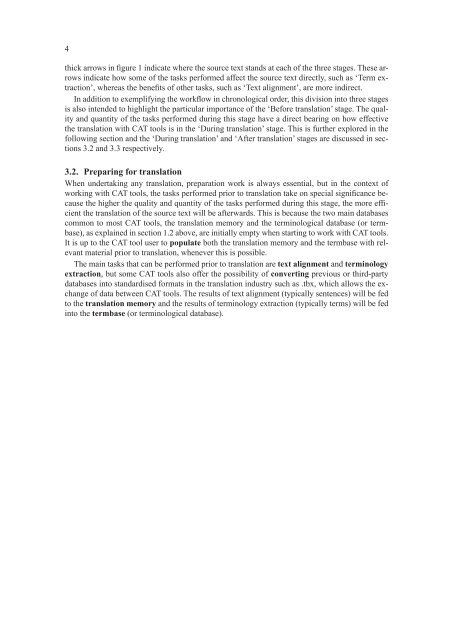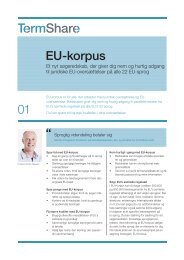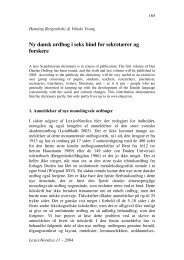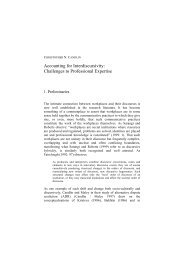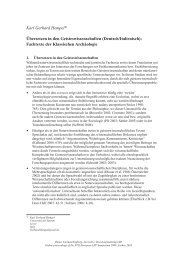The Workflow of Computer-Assisted Translation Tools in
The Workflow of Computer-Assisted Translation Tools in
The Workflow of Computer-Assisted Translation Tools in
Create successful ePaper yourself
Turn your PDF publications into a flip-book with our unique Google optimized e-Paper software.
4<br />
thick arrows <strong>in</strong> fi gure 1 <strong>in</strong>dicate where the source text stands at each <strong>of</strong> the three stages. <strong>The</strong>se arrows<br />
<strong>in</strong>dicate how some <strong>of</strong> the tasks performed affect the source text directly, such as ‘Term extraction’,<br />
whereas the benefi ts <strong>of</strong> other tasks, such as ‘Text alignment’, are more <strong>in</strong>direct.<br />
In addition to exemplify<strong>in</strong>g the workfl ow <strong>in</strong> chronological order, this division <strong>in</strong>to three stages<br />
is also <strong>in</strong>tended to highlight the particular importance <strong>of</strong> the ‘Before translation’ stage. <strong>The</strong> quality<br />
and quantity <strong>of</strong> the tasks performed dur<strong>in</strong>g this stage have a direct bear<strong>in</strong>g on how effective<br />
the translation with CAT tools is <strong>in</strong> the ‘Dur<strong>in</strong>g translation’ stage. This is further explored <strong>in</strong> the<br />
follow<strong>in</strong>g section and the ‘Dur<strong>in</strong>g translation’ and ‘After translation’ stages are discussed <strong>in</strong> sections<br />
3.2 and 3.3 respectively.<br />
3.2. Prepar<strong>in</strong>g for translation<br />
When undertak<strong>in</strong>g any translation, preparation work is always essential, but <strong>in</strong> the context <strong>of</strong><br />
work<strong>in</strong>g with CAT tools, the tasks performed prior to translation take on special signifi cance because<br />
the higher the quality and quantity <strong>of</strong> the tasks performed dur<strong>in</strong>g this stage, the more effi -<br />
cient the translation <strong>of</strong> the source text will be afterwards. This is because the two ma<strong>in</strong> databases<br />
common to most CAT tools, the translation memory and the term<strong>in</strong>ological database (or termbase),<br />
as expla<strong>in</strong>ed <strong>in</strong> section 1.2 above, are <strong>in</strong>itially empty when start<strong>in</strong>g to work with CAT tools.<br />
It is up to the CAT tool user to populate both the translation memory and the termbase with relevant<br />
material prior to translation, whenever this is possible.<br />
<strong>The</strong> ma<strong>in</strong> tasks that can be performed prior to translation are text alignment and term<strong>in</strong>ology<br />
extraction, but some CAT tools also <strong>of</strong>fer the possibility <strong>of</strong> convert<strong>in</strong>g previous or third-party<br />
databases <strong>in</strong>to standardised formats <strong>in</strong> the translation <strong>in</strong>dustry such as .tbx, which allows the exchange<br />
<strong>of</strong> data between CAT tools. <strong>The</strong> results <strong>of</strong> text alignment (typically sentences) will be fed<br />
to the translation memory and the results <strong>of</strong> term<strong>in</strong>ology extraction (typically terms) will be fed<br />
<strong>in</strong>to the termbase (or term<strong>in</strong>ological database).


